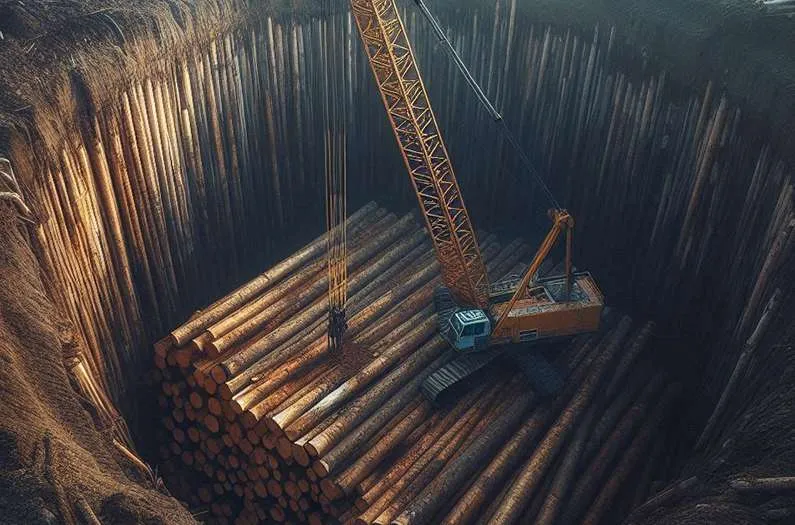Efforts are underway all around the world to capture carbon dioxide from the atmosphere and store it. Trees, of course, are naturals at this. Over their lifetime, they absorb large amounts of carbon dioxide. But when they die and rot, all that carbon goes right back out into the air.
So a few researchers have proposed burying dead trees underground in so-called “wood vaults” to sequester the carbon in the biomass. An almost 4,000-year-old discovery now bolsters this controversial idea.
Researchers report in the journal Science that they have found a tree buried in clay that has degraded very little over time. The discovery suggests that it is possible to vault biomass as long as the right environment can be created.
The idea of a wood vault is simple, almost so simple it sounds absurd. But the potential impact could be significant, says Ning Zeng, a climate scientist at the University of Maryland. Wood harvesting and storage could be scaled up to store 2-10 gigatonnes of carbon dioxide per year in a decade or two.
The low end of that range can be realized by vaulting currently unused wood waste, he says, “with co-benefits like help solving the wild fire problem in the America West and the urban waste wood problem in the East.”
The high end would require growing, harvesting and burying entire forests. That means major forest management, and is possible but sustainability needs to be ensured, Zeng says. If it works though, it could help meet the IPCC’s global net-zero carbon target.
But wouldn’t it be better to find ways to put that wood to use, for construction or other novel applications? The answer, he says, is that a lot of wood is simply not practical to use. “The reality is there are so much wood residuals such as fire thinnings or urban waste wood that are not suitable or too far away to be economically used. At the end of life, construction debris can also be buried.”
Wood vaulting would be a much cheaper way to sequester carbon than direct air capture or direct ocean capture of carbon dioxide. “As a hybrid nature-engineering solution, wood vaulting is simple, practical, with a low cost of less than $100 per tonne of carbon dioxide after optimization,” he says.
How the wood is buried is key for this to work though. Otherwise it would simply decompose in the soil. The target is to keep the wood buried without decomposing for over 1,000 years. The ancient Eastern red cedar log that the researchers found buried about 2 meters beneath the surface had lost less than 5 percent of its carbon after almost 3,775 years. Its cell structure was also nearly intact.
This helped the researchers identify the conditions needed to sequester the tree’s carbon. Key to vaulting, they realized, is a clay-rich soil with very low permeability. This created an oxygen-depleted environment and reduced the number of bugs and fungi that could reach it. “This provides a critical data point for guiding wood vault engineering,” Zeng says.
